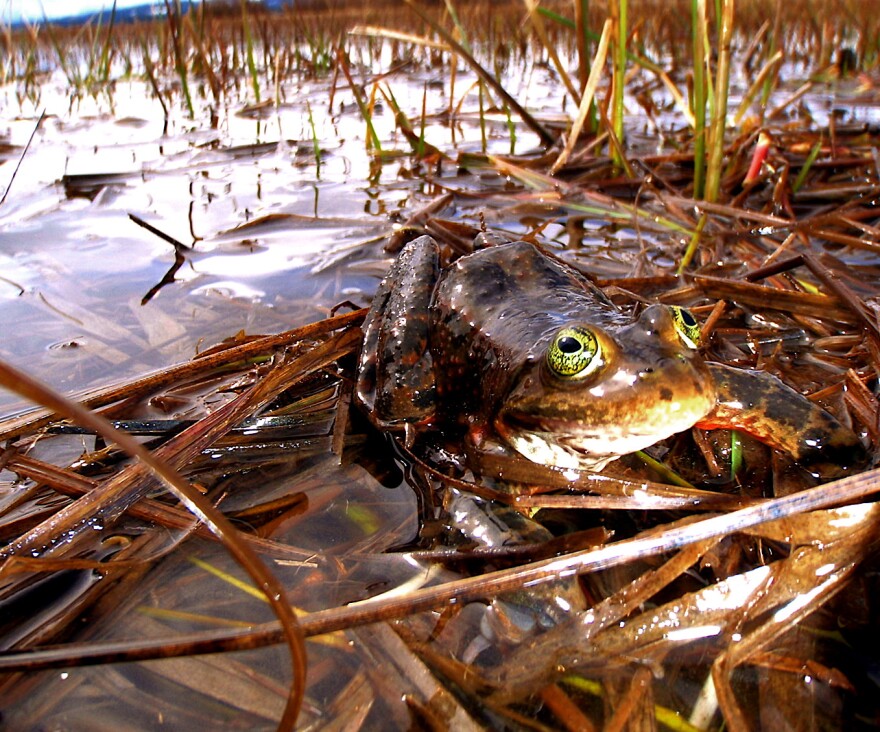A wildlife conservation group has warned two federal agencies that they intend to sue over what they call a “flawed” and “incomplete” habitat plan that endangers a regional amphibian.
The Center for Biological Diversity sent a 52-page notice to the U.S. Fish and Wildlife Service and the Bureau of Reclamation Thursday. In it, the group blasts their plan for managing the upper Deschutes River, saying dam flows have affected its waters, and further threaten the Oregon spotted frog’s population.
“Not only does it not work for the river and for the frog, but it really won’t work for the farmers in Central Oregon either,” Meg Townsend, the center’s freshwater attorney, told KLCC. “Because the U.S. Fish and Wildlife Service says that the flows have to come up in the winter, and down in the summer, no matter what. And yet it provides no measurable plan to get to those changes in flow in the upper Deschutes.”

In its release, the Center for Biological Diversity goes on to acknowledge that the habitat conservation plan was developed by many parties, including irrigation districts and federal agencies, and aims to help the Deschutes River by piping existing canals to curb water loss and increase the amount of water available to raise flows during the winter.
“However, this piping is not required by the plan and would not be completed for up to 10 years,” they write. “It’s uncertain whether this would even provide enough water to save the frog. The Service determined that the frog needs at least 500 to 600 cubic feet per second of water flow, but the plan only calls for 300 in 10 years, and only 400 in 15 years.”
Both federal agencies told KLCC that they will not comment on pending litigation.
The Oregon Zoo says the Oregon Spotted Frog has disappeared from 95% of its range, and is the most imperiled frog in the region.
@2023, KLCC.





